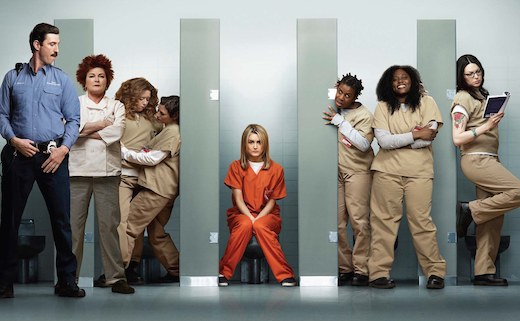By Samantha Berkhead
Editor-in-Chief
In the 1980s, cartoonist Alison Bechdel created a system to test gender bias in media. The Bechdel test is simple in its requirements. A film, television show or any other storytelling media passes the Bechdel test if it has at least two women in it who talk to each other about something other than a man.
It sounds easy, yet for some reason a startling percentage of films and shows don’t pass the test. According to bechdeltest.com, only 55.6 percent of the 4,416 films surveyed passed the test.
“Orange Is The New Black,” a Netflix-exclusive series that premiered all 13 episodes of its first season on July 11, is the most groundbreaking show since perhaps “Sex and the City” because of how it shatters Bechdel test trends.
It shows women as real people.
“Orange Is The New Black” tells the story of Piper Chapman, a WASP-y upper-middle-class blonde who gets sent to prison for trafficking drug money with her girlfriend 10 years prior. Her former girlfriend, Alex Vause, is also an inmate, giving Chapman no room to hide from her past demons.
Unlike other Bechdel-test-passers like HBO’s “Girls,” the women of the Litchfield Federal Correctional Facility come from all socioeconomic backgrounds, races and sexual orientations.
They engage with one another for reasons other than moving a romantic subplot forward. They learn to live in close proximity to one another, accept each others’ differences and help each other through the often-difficult life of a prisoner.
This makes the show a true rarity in the television landscape, and it deserves praise for that reason.
Chapman is a white woman from a wealthy background. Despite this, the other inmates never shy from informing Chapman of her place in the prison hierarchy, and she gets no special privilege. Each woman is given her chance to shine, as each episode centers on a different inmate’s story.
From Sophia, the transgender woman who yearns for her son’s love in between fixing dye jobs and weaves for her fellow inmates, to Tricia, a homeless, drug-addled but good-hearted teen who got caught stealing, each woman on “Orange” is complex, unique and demanding of the viewer’s attention. They stand alone as strong and independent beings without needing a man or a relationship.
Even when a girl like Daya, who falls in love with one of the prison guards, is shown, she also faces struggles not pertaining to her love life. “Orange” also depicts her strained relationship with her mother, who is also an inmate, and shows the two trying to make amends for the sake of family.
While the things these characters did to land themselves in prison are far from excusable, I commend “Orange Is The New Black” and its writers for crafting an ensemble of characters who are endearing, funny and often surprisingly relatable.
The show is a must-watch for anyone with a Netflix account, or anyone with a month-long free trial who likes marathon-watching shows. With a show like “Orange Is The New Black” in existence, passing the Bechdel test might well become the rule, not the exception.
berkhesj10@bonaventure.edu






